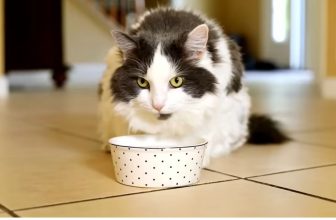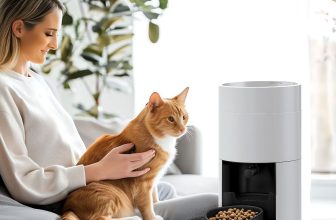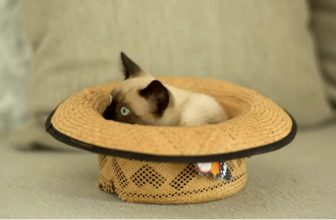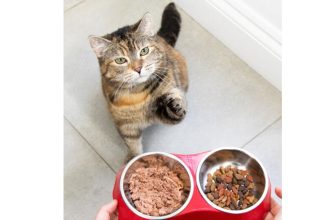Use The Cat Health Checklist to Keep Cats Healthy

Cats bring joy and love to our lives, so keeping them healthy is essential. The Cat Health Checklist is your quick guide to ensuring your feline friend stays happy and thriving. From balanced nutrition and regular grooming to routine vet check-ups and behavior monitoring, each point matters. This checklist helps you catch early signs of illness, support their daily needs, and improve overall well-being. Whether you’re a new cat owner or an experienced one, following the Cat Health Checklist ensures your cat gets the care they deserve. Stay informed, stay prepared, and keep those purrs going strong!
Daily Health Checks
Keeping a cat healthy is important for every cat owner. Daily health checks can help you ensure your feline friend is in good condition. These checks are simple yet effective ways to spot potential problems. They help you understand your cat’s needs better. By observing your cat’s behavior and monitoring its appetite, you can catch early signs of illness. This routine can make a huge difference in your cat’s well-being.
Observe Behavior
Behavior observation is crucial for a cat’s health. Cats are creatures of habit. Any change in their daily routine can indicate health issues. Watch for signs such as:
- Lethargy: Lack of energy or enthusiasm.
- Aggression: Sudden or unusual aggression.
- Vocalization: Excessive meowing or strange sounds.
- Hiding: More time spent hiding than usual.
Each cat is unique, and what seems normal for one may not be for another. It’s important to understand your cat’s usual behavior. Regular observation will help you notice changes quickly.
Sometimes, behavior changes are linked to stress. Stress factors can include moving house or getting new pets. Identifying these can help you address them. Cats also communicate through body language. Tail position, ear movement, and eye contact can reveal much about their mood.
Monitor Appetite
Monitoring appetite is another key aspect of daily health checks. A cat’s eating habits can reflect its health. Changes in appetite can be an early sign of illness. Look for:
- Reduced food intake: Eating less than usual.
- Increased food intake: Eating more than usual.
- Changes in water consumption: Drinking more or less.
Cats are known for their picky eating habits. Yet sudden changes are worth noting. Sudden refusal to eat can signal dental issues or stomach problems.
Keep an eye on their weight. Weight changes can be subtle but significant. Regular weight checks can help catch underlying problems. Always provide fresh water and food. Quality food contributes to overall health and wellness.
Consistency is key. Observing and monitoring your cat daily will keep it healthy. Early detection can prevent serious health issues and ensure a happy life for your pet.

Regular Vet Visits
Cats are beloved pets, and keeping them healthy is a top priority. To ensure their well-being, a comprehensive Cat Health Checklist is essential. Regular vet visits form an important part of this checklist. These visits help in the early detection of health issues, ensuring your cat lives a long and healthy life. By scheduling consistent vet appointments, you can stay on top of your cat’s health needs and provide them with the best care possible.
Vaccination Schedule
Vaccinations play a key role in safeguarding your cat from various diseases. It’s crucial to follow a proper vaccination schedule to keep your furry friend safe. Kittens need their first vaccinations between 6 to 8 weeks of age. This includes vaccines for feline distemper, feline herpesvirus, and calicivirus. At 12 weeks, they require a rabies shot. Booster shots are necessary throughout their life.
- 6-8 weeks: Feline distemper, herpesvirus, calicivirus
- 12 weeks: Rabies vaccine
- Annually: Booster shots for all vaccines
Consult your vet for a personalized vaccination plan. Some cats might need extra vaccines based on lifestyle and environment. Outdoor cats may need additional protection against feline leukemia. Indoor cats might not require this vaccine. Regular check-ins with the vet ensure your cat stays up-to-date.
Routine Examinations
Routine examinations are vital for tracking your cat’s health. These exams help in catching any problems early, before they become severe. During a routine check-up, the vet examines the cat’s body, checks its weight, and looks at its teeth and gums. They also listen to the heart and lungs.
| Examination Type | Frequency |
|---|---|
| Weight and Body Condition | Every 6 months |
| Dental Check | Annually |
| Heart and Lung Check | Every visit |
Routine exams also include checks for parasites. Fleas, ticks, and worms can cause health issues. Regular screenings help in preventing infestations. Keeping track of your cat’s health leads to a happier pet. Schedule routine exams to ensure your cat’s wellness.
Nutrition Essentials
Caring for a cat means ensuring they are healthy and happy. Nutrition plays a crucial role in a cat’s well-being. Proper nutrition helps maintain their energy levels, coat health, and overall physical condition. A balanced diet is vital for preventing diseases and promoting longevity. This checklist will guide you through the essentials of cat nutrition, helping you make informed choices. By understanding the basics, you can provide your feline friend with the best care possible.

Quality Food Choices
Choosing the right food is essential for your cat’s health. High-quality cat food provides the necessary nutrients for growth and maintenance. Look for options that list meat as the primary ingredient. This ensures your cat receives enough protein.
- Check the label for essential nutrients like taurine and omega fatty acids.
- Avoid foods with excessive fillers like corn and soy.
- Consider your cat’s age, activity level, and health conditions.
A table can help compare different food brands:
| Brand | Protein Source | Fillers | Price Range |
|---|---|---|---|
| Brand A | Chicken | Minimal | $$ |
| Brand B | Fish | Moderate | $$$ |
| Brand C | Beef | High | $ |
Always consult your vet before making significant changes to your cat’s diet. Their advice is valuable in choosing the best food for your pet.
Hydration Importance
Water is crucial for a cat’s health. Cats need fresh, clean water daily. Proper hydration aids digestion and supports kidney function. Cats often prefer running water, so consider a pet fountain.
- Place multiple water bowls around your home.
- Ensure bowls are cleaned regularly to avoid bacteria.
- Monitor your cat’s water intake, especially during hot weather.
Cats on dry food diets need extra water. Wet food can help increase their fluid intake. Cats are sometimes reluctant to drink plain water. Adding a bit of broth can make it more appealing.
Signs of dehydration include lethargy, dry gums, and sunken eyes. If you notice these, consult your vet immediately. Maintaining proper hydration ensures your cat stays healthy and active.
Grooming Practices
Cats are known for their independence, but they still need our care. A healthy cat is a happy cat, and grooming plays a big role in their health. Grooming keeps a cat’s coat clean and reduces shedding. It also helps in preventing skin issues and detecting parasites early. Regular grooming sessions can strengthen the bond between you and your cat. The cat health checklist includes important grooming practices. Let’s explore the essentials of brushing techniques and nail care.
Brushing Techniques
Brushing your cat’s fur is more than just a beauty routine. Regular brushing helps remove loose hair and dirt. It also reduces hairballs and stimulates blood circulation. Each cat breed has its own brushing needs.
- Short-haired cats: Brush once a week to maintain a shiny coat.
- Medium-haired cats: Twice a week is ideal to prevent tangles.
- Long-haired cats: Daily brushing is a must to avoid mats and knots.
Choose the right brush for your cat’s coat type. A bristle brush suits short-haired cats. Use a slicker brush for medium to long-haired breeds. Be gentle and make it a positive experience. Offer treats and speak softly. This makes the session enjoyable for your cat. Start slowly and increase the duration as your cat gets comfortable. Remember, patience is key. With time, your cat will look forward to these sessions.
Nail Care
Regular nail trimming is crucial for your cat’s health. Long nails can cause pain and infections. Scratching posts are helpful, but trimming is still necessary. Aim to trim your cat’s nails every two weeks.
| Step | Description |
|---|---|
| 1 | Gather tools: Cat nail clippers and styptic powder. |
| 2 | Find a quiet place and keep your cat calm. |
| 3 | Hold the paw and gently press to extend the nail. |
| 4 | Trim the tip of the nail. Avoid the quick. |
| 5 | Reward with treats and praise after each session. |
Be patient and calm throughout the process. If you’re nervous, your cat will feel it too. Trim only a small part of the nail. Cutting too much can hurt your cat. If unsure, consult a vet or a professional groomer. They can demonstrate the best techniques. Proper nail care helps your cat walk comfortably and prevents damage to your furniture.

Dental Care
Maintaining a cat’s health is important. One key aspect is dental care. Cats need healthy teeth for eating and playing. Poor dental care can lead to pain and illness. A cat health checklist can help keep track of dental needs. This guide provides tips for teeth cleaning and signs of dental issues. Keeping a cat’s mouth healthy leads to a happier pet.
Teeth Cleaning Tips
Cleaning a cat’s teeth is crucial. It prevents the buildup of plaque and tartar. Here are some simple tips for cat teeth cleaning:
- Use a soft toothbrush designed for cats.
- Choose a cat-friendly toothpaste. Human toothpaste is harmful to cats.
- Start with short sessions to get your cat used to brushing.
- Brush the outer surfaces of the teeth first.
- Gradually work up to more thorough cleanings.
- Offer treats or praise after brushing to make it a positive experience.
Regular brushing helps keep a cat’s teeth clean. Aim for at least three times a week.
Signs Of Dental Issues
Dental problems in cats can be painful. Knowing the signs of dental issues helps catch problems early. Here are some common signs to watch for:
- Bad breath that doesn’t go away.
- Red or swollen gums.
- Bleeding from the gums or mouth.
- Difficulty eating or chewing food.
- Pawing at the mouth or face.
- Excessive drooling.
If any of these symptoms appear, a vet visit is needed. Early treatment can prevent worse issues. Regular check-ups help ensure a cat’s dental health.
Exercise Needs
Cats are wonderful companions, but ensuring their health is a priority. A crucial part of maintaining their well-being is meeting their exercise needs. Like humans, cats need regular physical activity to stay healthy. Exercise helps prevent obesity, reduces stress, and supports mental health. This guide provides insights into how to keep your feline friend active. It focuses on the importance of playtime and the physical benefits of exercise.
Playtime Activities
Cats are naturally curious and playful creatures. Providing engaging playtime activities is essential. It not only satisfies their instincts but also keeps them fit.
- Interactive toys: Toys like feather wands and laser pointers are great. They encourage your cat to chase and pounce.
- Ball games: Small balls can entertain cats for hours. Rolling a ball on the floor can trigger their hunting instincts.
- Obstacle courses: Create simple courses using boxes and tunnels. It challenges their agility and keeps them entertained.
- DIY toys: Use household items like paper bags or cardboard. These can be fascinating for cats to explore.
Regular playtime strengthens your bond with your cat. It also helps in reducing unwanted behaviors due to boredom. Allocate at least 15-20 minutes daily for interactive play. Vary the toys and activities to keep things interesting.
Physical Health Benefits
Regular exercise offers numerous physical health benefits for cats. An active cat is less likely to be overweight. This lowers the risk of health problems like diabetes and arthritis.
| Health Benefit | Description |
|---|---|
| Weight management | Exercise helps burn calories, preventing obesity. |
| Joint health | Staying active maintains flexibility and joint mobility. |
| Heart health | Regular activity strengthens the heart and improves circulation. |
| Stress reduction | Exercise releases pent-up energy, reducing anxiety. |
An active lifestyle can also lead to a longer, healthier life. It’s important to encourage daily movement. Even small activities can make a big difference. Remember, a healthy cat is a happy cat.
Parasite Prevention
Caring for your cat’s health is crucial. Parasite prevention plays a big role in keeping cats safe and healthy. Parasites like fleas, ticks, and worms can cause serious issues. They might lead to discomfort and disease. Being proactive with prevention methods is important. It ensures your furry friend stays happy and healthy. Addressing these parasites is a key part of the cat health checklist. It helps maintain their well-being. Let’s explore how to protect your cat from these pesky invaders.

Flea And Tick Control
Fleas and ticks are common parasites. They can cause irritation and disease. Effective flea and tick control is essential. It keeps your cat free from these pests. Here are some ways to protect your cat:
- Regular grooming: Brush your cat’s fur frequently. It helps spot fleas early.
- Use flea combs: Special combs can catch fleas and their eggs.
- Flea treatments: Use vet-approved products. They often come in sprays, shampoos, or spot-on treatments.
- Tick checks: After outdoor activities, check your cat for ticks.
- Clean environment: Keep your home clean. Vacuum carpets and wash bedding regularly.
Consult your vet for the best flea and tick control options. They can recommend suitable products. Preventive measures can save your cat from discomfort and illness. Start with simple steps to ensure your cat’s protection.
Worming Protocols
Worms can affect your cat’s health. They may cause weight loss and digestive problems. Regular worming protocols are important. They help keep your cat free from these parasites. Here’s how to manage worming effectively:
- Routine vet visits: Schedule regular check-ups. Vets can test for worms.
- Worming medications: Use vet-recommended treatments. They come in tablets or liquids.
- Monitor symptoms: Watch for signs like vomiting or diarrhea. These may indicate worms.
- Hygiene practices: Clean litter boxes often. It reduces the risk of worm transmission.
- Diet considerations: Ensure your cat has a balanced diet. Good nutrition supports their immune system.
Discuss worming schedules with your vet. They can guide you on frequency and products. Preventive care is key. It maintains your cat’s health and happiness. Taking these steps will help protect them from parasites.
Recognizing Illness
Cats are beloved members of our families. Keeping them healthy is very important. The Cat Health Checklist is a useful guide. It helps in recognizing illness early. Cats can be mysterious creatures. They often hide when they are sick. Knowing the signs of illness can save your cat’s life. This checklist is easy to follow. It makes sure your furry friend stays in top shape.
Common Symptoms
Cats show illness in various ways. Recognizing these symptoms is crucial for their health. Some signs are easy to spot. Others are more subtle. Here are common symptoms to watch for:
- Loss of appetite: Cats love their food. If they stop eating, it could be a problem.
- Weight changes: Sudden weight loss or gain can be a sign of an underlying illness.
- Lethargy: A tired cat might be hiding an illness.
- Changes in behavior: Aggression or withdrawal can be signs of discomfort.
- Vomiting or diarrhea: These can lead to dehydration and are concerning.
- Coughing or sneezing: Could be signs of respiratory issues.
Monitor your cat’s behavior closely. Early detection can prevent serious health issues. The sooner you notice these symptoms, the better.

When To Seek Help
Some symptoms need immediate attention. Knowing when to seek help is important. Cats can’t tell us when they hurt. We must be their voice. Contact your vet if you notice:
- Persistent vomiting: More than once a day is a red flag.
- Difficulty breathing: Any struggle to breathe needs urgent care.
- Severe pain or distress: Listen to your cat’s cries or discomfort.
- Bleeding: Any unexplained bleeding is serious.
- Inability to urinate: This is an emergency.
Regular check-ups are also vital. They help catch problems early. A healthy cat is a happy cat. Keep them safe by knowing when to seek help.
Frequently Asked Questions: The Cat Health Checklist
What Is The 3-3-3 Rule For Cats?
The 3-3-3 rule for cats helps them adjust to new homes. It takes about 3 days to decompress, 3 weeks to learn your routine, and 3 months to feel fully comfortable. This timeline helps set realistic expectations for cat owners.
How To Tell If A Cat Is Nearing The End Of Life?
Signs a cat is nearing the end of life include decreased appetite, lethargy, weight loss, and difficulty breathing. Watch for changes in grooming, hiding behavior, and reduced interest in surroundings. Consult a vet for guidance and support during this time. Ensure comfort and provide a peaceful environment for your cat.
What Is The Checklist For Having A Cat?
Ensure your home is pet-safe. Buy essential supplies like food, a litter box, and toys. Schedule veterinary care. Provide a cozy sleeping area. Offer regular grooming and exercise.
How Much Does A Wellness Check Cost For A Cat?
A cat wellness check typically costs between $50 to $100. Prices vary based on location and veterinary clinic. Some clinics offer package deals for multiple services. Always contact your local vet for specific pricing and available discounts. Regular wellness checks are essential for your cat’s health and well-being.
What Are Common Signs Of A Healthy Cat?
Bright eyes, shiny coat, and playful behavior. Regular eating habits. Normal weight. Clean ears and teeth.
Conclusion
Your cat’s health matters. Regular check-ups keep them happy and active. Monitor their weight, diet, and behavior closely. These simple steps can make a big difference. Cats communicate through actions. So, be observant. Notice any changes in their routine. Quick response to health issues is crucial.
This checklist helps you stay prepared. Caring for your cat is rewarding and satisfying. Keep their environment clean and stress-free. Healthy cats lead longer, joyful lives. Your furry friend deserves the best care. Use this checklist for peace of mind.
Your cat’s well-being is in your hands.







